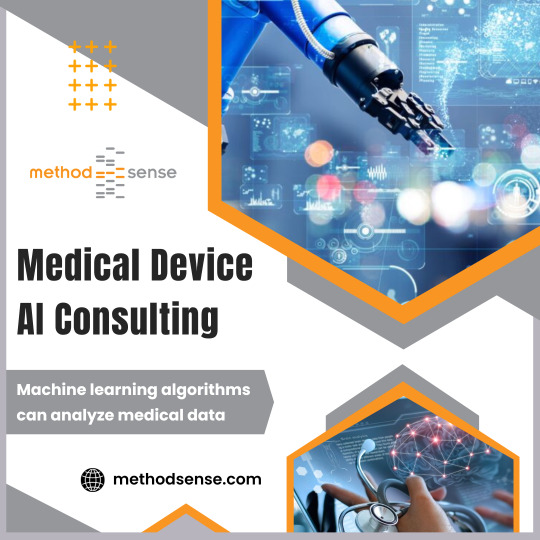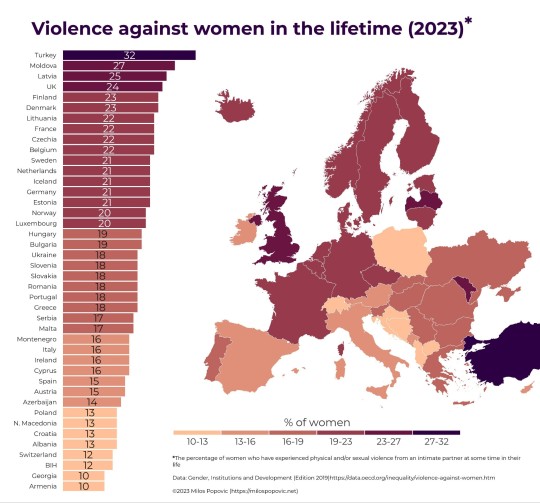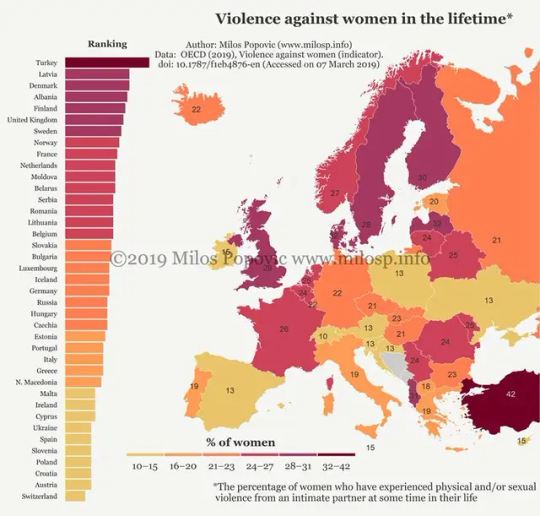#Quality System Development
Explore tagged Tumblr posts
Text

AI Consulting Service for Medical Devices
Artificial intelligence software algorithms to learn from the real-world use of the medical device to improve its performance. We offer specialized healthcare AI consulting services that help companies achieve their goals. To more details, reach our website.
#device consulting#fda compliance strategies#quality system development#risk remediation#compliance audits#medical device compliance
0 notes
Text

as metal breaks and bends
#blood cw#sonic the hedgehog#sonic#sonic heroes#idw sonic#metal sonic#neo metal sonic#metal overlord#i love how sonic heroes characterized metal#he’s so unapologetically murderous and defiant#he’s a dark reflection of eggman’s worst qualities#cause he’s his creator y’know#but you also have sonic and shadow in there#then it’s just a really screwed up salad of identity crisis#HE’S A PRODUCT OF THE SYSTEM#anyway#i love metal and sonic heroes should get more recognition for how it developed him#the final boss was cool lol#my art#if this needs more warnings lmk!
268 notes
·
View notes
Text
so I've been working on my latest conlang, irkan osla (or just osla for short), for a bit now and would like to showcase its writing system in this post! osla has a syllabic alphabet, not too dissimilar to korean hangul, where letters are stacked according to certain rules to make syllable blocks.
osla's syllable structure is (C)(C)V(V)(C), here's how the stacks work for each type of syllable:

all letters have small, wide, and tall forms depending on their position in the syllable. here are all the letters with their IPA value and romanization:

and here's an example text! i translated parts of the minecraft end poem into osla. maybe i'll make another post just focusing on the grammar when it's more developed. the poem says in english:
What did this player dream? This player dreamed of sunlight and trees. Of fire and water. It dreamed it created. And it dreamed it destroyed. It dreamed it hunted, and was hunted. It dreamed of shelter.

Does it know that we love it? That the universe is kind? Sometimes, through the noise of its thoughts, it hears the universe, yes.

this post is getting long, so under the cut you'll find a "sans-serif" version as well as the poem in osla and its gloss if you're also a linguistics nerd and wanna know what's going on under the hood (the roman numerals stand for the 3 noun classes)! thanks for reading!
The way regular people would write something quickly on a piece of paper with a regular pen is an aspect of creating neographies that I feel is often overlooked, so I developed this sans-serif version that people would probably be more likely to use when writing their shopping lists or diary entries:

And, finally, here's the poem translation:
pak oṇḍul phan wimbakis?
DET.I.SG.PROX play-AGN what dream-PST.3SG.I?
pak oṇḍul lümaṇiuṣerothi han buloni an wimbakis. kaṣkhaothi han nilothi an. wimbakis, run sëmamkis. wimbakis, run xokthakis, han bumxokthakis. zöga an wimbakis.
DET.I.SG.PROX play-AGN sunlight-II.SG.DAT and tree-II.PL.DAT of dream-PST.3SG.I. Fire-II.SG.DAT and water-II.SG.DAT of. dream-PST.3SG.I, that create-PST.3SG.I. dream-PST.3SG.I, that hunt-PST.3SG.I, and PASS-hunt-PST.3SG.I. shelter of dream-PST.3SG.I.
ṭauraka, run kaak samare? run glutsüna flia?
know-NP.3SG.I, that 3SG.I.ABS love-NP.1PL? that universe kind?
imba ethamo, khaṣiŋli an ka’am hu’aŋni pitë, glutsüna ṣaraka, ti.
some time-NOM.III.PL, noise-ACC.II.SG of 3SG.I.GEN thought-NOM.III.PL through, universe hear-NP.3SG.I, yes.
#i hope the quality of the images isnt too unbearable :')#if you wanna write something with this script go for it and tag me!! but pls dont take it for your own projects and all that#i actually didnt notice its similarity to hangul until after i was done lol#id actually developed a completely different alphabet first but thought it was too boring#and like ngl i am literally so happy with how this came out lmao its so pretty and fun to write#definitely my 2nd if not most fave writing system ive ever developed for my clongs#(also btw technically not all small versions of consonants would actually be used#only those that appear in clusters. but i put them there anyways#like theoretically you could forgo all the wide and tall letters and block structure and just write the small letters in a line#like a more traditional alphabet. but this is more fun)#also hi if david peterson reads this i will literally die thx ily#i just realized universe in the last sentence is supposed to be accusative fml!!!!!!!!!!! always gotta doublecheck my cases man ah man whyy#conlang#conlangs#my conlangs#irkan osla#neography#conscript
108 notes
·
View notes
Text
remember that interview i had that i really wanted to get the job for? WELL i'm going in for a THIRD INTERVIEW tomorrow with the fucking MD ahahaha!!! they have 2 roles now, the new one for quality systems engineer which needs lead auditor which i don't have (i have internal auditor), and my agency are repping another candidate for it, so they're trying to push it as being the pair of us working together well cos i have the textiles background and he doesn't
SO LET'S SEE HOW IT GOES I GUESS!!!! annoyingly it's at 1pm which means i'll be travelling during lunchtime which i hate but at least this time i won't have to do a 2hr factory tour sdgkhlf'g
#quail cheeping#i'm highkey glad they drummed up someone with lead auditor cos like.... while i do kinda wanna get it for my personal development#i also hate auditing LOL so i don't wanna be their systems guy!!! i hate QMS shit......#let me at the practical hands on quality please!!!!#let me at the data analysis and the process improvements and the working with the shop floor!!!!#maybe i shall treat myself to starbies again afterwards too
7 notes
·
View notes
Text

Stealing this image from twitter and bringing it over here, because holy shit, some of the clowns I have been seeing talk about the game lately.
#Novice Network is a toxic waste pit right now#filled to the brim with returners who think they’re hot shit talking about ‘If Square really thought a cutscene was important they would hav#e put voice acting in it’ and other shit like that#‘I just skip all non voiced because the voiced cutscenes recap all that boring shit anyway”’#no they don’t???#Is THIS what a new Expac brings out?#because it’s genuinely dreadful#do you even enjoy the game at that point? Complain about fetch quests complain about the dialogue complain about the writing quality#why not just go play a game you like???#It’s getting to the point where I just have my chat log closed most of the time#not leaving NN because it WAS really nice during the post-Endwalker patch cycle#when mostly only people who actually liked the game (????) were still playing.#but the amount of toxic attitude returners I’ve seen in there lately is disheartening.#I hope it’ll come back down in the following weeks#once they’ve burnt through Dawntrail and decided the game doesn’t have anything for them#and they’ve sufficiently wasted their time#instead of just… taking it slow and taking in the world and the sights and the story……..#I’ve heard that Dawntrail is basically ARR 2. Which. big if true.#Because we could use that.#A return to form#with the new systems and developments in the game#bringing the story back down a little bit and reining it in#I am VERY excited to get there some day.#but I know that these people I’m bitching and moaning about aren’t thrilled#(honestly that just makes me like it more)#Anyway#point is#if you’re playing a game why the hell aren’t you engaging with said game?#What’s the point of skipping to the end as fast as possible only to get annoyed when there’s no more content?#This is exactly the problem that I’ve heard ex-WoW players complain about with regards to their player base
10 notes
·
View notes
Text



what's incredible about these maps is how hard western euros will cope at the idea that their enlightened and superior society could ever be worse than *flips through notebook* those uncivilized lesser slavic poles and ukrainians. russians and croats also are lying too.



what's funny is that this yearly EU study is conducted in such a way that literally accounts for bias in reporting and cultural stigma, yet still they will cope and are unable to consider that based social democrat scandinavian finns beat their wives more than poles
(don't look at spousal murder rates in scandinavia ha ha)
#it's not surprising to me at all#this is the same way they get miffed at the fact that eastern euros have far better representation of women in higher fields of work#like healthcare and academia#uhhh it can't be those filthy communists or cultural differences uhh it's#yeah fake data look they're not as developed as our fields does it count???#or how miffed and pissed they got when ukrainian refugees in the UK said the healthcare system there is completely dysfunctional compared#to ukraine#NO!!! ungrateful untermensch!!!#it must be lesser quality!!! (it isn't and is sometimes better)#like the four things the communist excelled at was 1) housing 2) healthcare 3) public transport 4) education#why is this a surprise#txt#btw wth is going on with latvia#no. 2 wife beaters after turkey
12 notes
·
View notes
Text
On one hand i would like to have a large baby. my family and gilgamesh’s come from a long line of beefy, nine pound plus chunkers. I was 9 and something lbs with a full head of hair and almost a week late. I want that baby fully cooked and maybe a little overdone. tons of studies not just anecdotal show that they just seem sort of… nicer and easier to deal with, like the biggest of the litter. they sleep more. they dont struggle in general as much and they gain weight easily and they also move a little slower. not saying they dont hit milestones but a fat ass baby will stay in its potted plant lump stage a little while longer before jumping into the running around sticking fingers in outlets stage.
on the other hand, i am so so concerned for the sanctity of my gooch. a nine pound baby will tear my grundle asunder. my taint to shreds.
#the thing nobody talks about pregnancy is you already have to deal w constipation cause your body has bigger priorities#& your uterus is freaking the fuck out next to ur intestines#the chance of hemorrhoids before birth is very common#my pussy? i believe in her.#my gooch? he’s a sensitive soul.#its also a bit funny when people say things like ‘we have been having babies for millenium’#technically yes. but at these sizes w our modern nutrition? we sure the fuck haven’t#they actually gave prenatals to pregnant ppl in developing countries and it led to MORE complications and deaths#bc the prenatals weren’t also paired w high quality modern medicine#so these large babies were just causing all sorts of chaos compared to smaller more easily birthed babies#the way our reproduction system is they are just very large parasites#they’ll steal your teeth and rip open your gooch
11 notes
·
View notes
Text
BitNest
BitNest: The Leader of the Digital Finance Revolution
BitNest is a leading platform dedicated to driving digital financial innovation and ecological development. We provide comprehensive cryptocurrency services, including saving, lending, payment, investment and many other functions, creating a rich financial experience for users.
Our story began in 2022 with the birth of the BitNest team, which has since opened a whole new chapter in digital finance. Through relentless effort and innovation, the BitNest ecosystem has grown rapidly to become one of the leaders in digital finance.
The core functions of BitNest ecosystem include:
Savings Service: Users can deposit funds into BitNest's savings system through smart contracts to obtain stable returns. We are committed to providing users with a safe and efficient savings solution to help you achieve your financial goals. Lending Platform: BitNest lending platform provides users with convenient borrowing services, users can use cryptocurrencies as collateral to obtain loans for stablecoins or other digital assets. Our lending system is safe and reliable, providing users with flexible financial support. Payment Solution: BitNest payment platform supports users to make secure and fast payment transactions worldwide. We are committed to creating a borderless payment network that allows users to make cross-border payments and remittances anytime, anywhere. Investment Opportunities: BitNest provides diversified investment opportunities that allow users to participate in trading and investing in various digital assets and gain lucrative returns. Our investment platform is safe and transparent, providing users with high-quality investment channels. Through continuous innovation and efforts, BitNest has become a leader in digital finance and is widely recognised and trusted globally. We will continue to be committed to promoting the development of digital finance, providing users with more secure and efficient financial services, and jointly creating a better future for digital finance.
#BitNest: The Leader of the Digital Finance Revolution#BitNest is a leading platform dedicated to driving digital financial innovation and ecological development. We provide comprehensive crypto#including saving#lending#payment#investment and many other functions#creating a rich financial experience for users.#Our story began in 2022 with the birth of the BitNest team#which has since opened a whole new chapter in digital finance. Through relentless effort and innovation#the BitNest ecosystem has grown rapidly to become one of the leaders in digital finance.#The core functions of BitNest ecosystem include:#Savings Service: Users can deposit funds into BitNest's savings system through smart contracts to obtain stable returns. We are committed t#Lending Platform: BitNest lending platform provides users with convenient borrowing services#users can use cryptocurrencies as collateral to obtain loans for stablecoins or other digital assets. Our lending system is safe and reliab#providing users with flexible financial support.#Payment Solution: BitNest payment platform supports users to make secure and fast payment transactions worldwide. We are committed to creat#anywhere.#Investment Opportunities: BitNest provides diversified investment opportunities that allow users to participate in trading and investing in#providing users with high-quality investment channels.#Through continuous innovation and efforts#BitNest has become a leader in digital finance and is widely recognised and trusted globally. We will continue to be committed to promoting#providing users with more secure and efficient financial services#and jointly creating a better future for digital finance.#BitNest#BitNestCryptographically
4 notes
·
View notes
Text
Playing Bioshock 1 again for the first time in a long while, it made me realise just how much of 7th generation gaming we take for granted.
Among all the piss-filtered dark-age talk of how so many AAA games around this time eventually became homogenously Gears of War/COD-like in order to capitalise on their success, we tend to memory hole how this generation started off with a bang with titles like this, Prey (2006), Kameo: Elements of Power, and Little Big Planet.
It was also the last time we would ever see this many original single player games with AAA backing debut in a generation, until the 2010s where said industry would start going all in on the live-service multiplayer model.
While the indie/mid-budget gaming scene has picked up the torch of continuing to bring us fantastic SP games that have themselves become legends in their own right, there's something I find truly magical about playing a SP game that, not only has a solid premise and design philosophy going on, but also has the kind of high production values that AAA can afford them.
#Bioshock#Gaming#Don't get me wrong this isn't a knock against System Shock 1+2#They're also both good games#But Bioshock is not only more focused in design#it's also rocking style AND substance#I guess the one problem I have with AAA games now besides live service nonsense#is that games are way too big in file size due to uncompressed files in order to look “pretty”#reeled in polycount#lower quality sound mixing#and slightly blurry/pixelated textures#Is a sacrifice I'm willing to make in the name of preserving disk space thank you very much#I love video games okay?#I also love game developers being given more creative freedom and resources#ESPECIALLY without executive meddling#Don't think I don't see you#2K Games#Bioshock Infinite
2 notes
·
View notes
Text
if one more class forces the fucking hero's journey down my throat in one way or another im gonna fucking lose it
#just got presented with 'the five stages of the soul' in a world religion class. thats just. the hero's journey. again#will i be surprised if i read the pdf all the way through and see that joseph campbell is given praise at least once? i will not#all this after having to take a break from the second chapter of this textbook because its 'indigenous religions' section is so painfully#generalizing grjgfhjdhfg 'indigenous peoples believe (___)' all of them? ALL of them?????#thats generalizing when referring to native american groups alone let alone. EVERY indigenous group#what i have learned as a religious studies minor is that people (namely white/eurocentric people) really really love making sweeping#generalizations about cultures they aren't a part of in order to feel as if they have the ultimate knowledge and authority on Everything#and that joseph campbell specifically has done irreparable damage to the collective western consciousness in this area#like fuck is it really that hard to address different spiritual beliefs and the groups they come from as individual (and Sometimes related-#usually regionally/by proximity)? why is it that its less likely that a textbook like this will generalize a belief across all of#say christianity (as in all sects) but they tend to be unconcerned with considering all uncolonized systems of#belief to have the same core tenets and qualities and so on. how does that make any sense#a culture developed in southern australia and a culture developed in the appalachians and a culture developed off the#coast of india cannot possibly be interchangeable in the context of analyzing spiritual and religious concepts#anyway. anyway. anyway.#i got off track a bit from the hero's journey but i mean not really. all of this is very campbellian.#i think my disdain for that man partially comes from the fact that i cant fucking escape him in my major OR minor despite#the two being seemingly pretty fucking unrelated (film studies / religious studies)#the hero's journey haunts me in both. end me#kibumblabs#i should be doing. my work. and not complaining about it on tumblr
1 note
·
View note
Text
Elevate your pharmaceutical quality with Zenovel's cGMP consulting. Our expert cGMP consultants provide comprehensive GMP consulting services, ensuring regulatory compliance throughout drug development. Partner with us for robust quality systems.
#cGMP consulting#cGMP consultant#GMP compliance#GMP consulting services#drug development consulting#pharmaceutical consulting#GMP regulatory guidance#GMP audit preparation#pharmaceutical quality systems
0 notes
Text
What I was taught growing up: Wild edible plants and animals were just so naturally abundant that the indigenous people of my area, namely western Washington state, didn't have to develop agriculture and could just easily forage/hunt for all their needs.
The first pebble in what would become a landslide: Native peoples practiced intentional fire, which kept the trees from growing over the camas praire.
The next: PNW native peoples intentionally planted and cultivated forest gardens, and we can still see the increase in biodiversity where these gardens were today.
The next: We have an oak prairie savanna ecosystem that was intentionally maintained via intentional fire (which they were banned from doing for like, 100 years and we're just now starting to do again), and this ecosystem is disappearing as Douglas firs spread, invasive species take over, and land is turned into European-style agricultural systems.
The Land Slide: Actually, the native peoples had a complex agricultural and food processing system that allowed them to meet all their needs throughout the year, including storing food for the long, wet, dark winter. They collected a wide variety of plant foods (along with the salmon, deer, and other animals they hunted), from seaweeds to roots to berries, and they also managed these food systems via not only burning, but pruning, weeding, planting, digging/tilling, selectively harvesting root crops so that smaller ones were left behind to grow and the biggest were left to reseed, and careful harvesting at particular times for each species that both ensured their perennial (!) crops would continue thriving and that harvest occurred at the best time for the best quality food. American settlers were willfully ignorant of the complex agricultural system, because being thus allowed them to claim the land wasn't being used. Native peoples were actively managing the ecosystem to produce their food, in a sustainable manner that increased biodiversity, thus benefiting not only themselves but other species as well.
So that's cool. If you want to read more, I suggest "Ancient Pathways, Ancestral Knowledge: Ethnobotany and Ecological Wisdom of Indigenous Peoples of Northwestern North America" by Nancy J. Turner
61K notes
·
View notes
Text
Exploring the Growth and Excellence of the Pharmaceutical Industry in India
Exploring the Growth and Excellence of the Pharmaceutical Industry in India
The pharmaceutical industry in India has emerged as a key global player, recognized for its cost-effective production, advanced pharmaceutical development and technology, and strong presence in international markets. With a growing focus on healthcare R&D, innovation in drug research and development, and robust pharmaceutical manufacturing, India continues to be a trusted supplier of pharmaceutical products and medicines across the globe.
The Rise of India's Pharmaceutical Sector
India holds a prominent position in the global pharmaceutical landscape, being among the largest pharmaceutical companies contributors to generic drug supply and vaccine production. The Indian government’s support, combined with private sector innovation, has made the country a leader in pharmaceutical manufacturing companies, with exports reaching over 200 countries.
This growth is driven by the country's commitment to high standards in quality control in pharmaceuticals, investment in pharma healthcare, and a vision to lead in global healthcare solutions.
Pharmaceutical Manufacturing and Innovation
India’s pharma manufacturing companies operate under stringent international regulations and practices, including GLP (Good Laboratory Practices), WHO-GMP certifications, and advanced automation systems. These companies are constantly innovating through strong R&D departments in pharmaceutical industry, focusing on developing new therapies, enhancing drug delivery methods, and ensuring quality throughout the supply chain.
Such innovation has fueled the creation of effective, accessible pharmaceutical drugs that have transformed public health outcomes both in India and abroad.

Key Attributes of Leading Pharma Companies
The top pharmaceutical manufacturing companies in India are recognized not just for their production volumes, but for their dedication to quality assurance, ethical standards, and technological advancement. Many of them rank among the top pharma companies worldwide thanks to their continuous delivery of new pharma products, global reach, and patient-focused approaches.
In this elite group, Zuventus Healthcare holds a distinguished place, known for its excellence in innovation, affordability, and trust.
About Zuventus Healthcare
Zuventus Healthcare Ltd. is a reputed name in the Indian pharmaceutical landscape. Based in Mumbai, Zuventus has steadily climbed the ranks to be recognized as a top pharmaceutical company in Mumbai and is counted among the top 10 pharmaceutical companies in India.
With a diverse portfolio of Zuventus healthcare products, the company serves multiple therapeutic areas, delivering effective and high-quality treatments. Its flagship brands, including Zuventus Gromaxx and Zuventus Odenea, highlight the company’s capability in creating targeted, result-driven medications that meet real-world healthcare demands.
Zuventus' Commitment to Quality and Ethics
What sets Zuventus Healthcare apart from other pharmaceutical companies in India is its unwavering focus on ethical practices, innovation, and operational excellence. The company follows robust quality management systems, with a strong emphasis on quality control methods to ensure that every product released meets stringent safety and efficacy benchmarks.
Its facilities are equipped to meet global manufacturing standards, making Zuventus a trusted name not only within India but also in the international health care market.
Driving Healthcare Through Vision and Values
Zuventus believes that a strong foundation lies in strong values. The company’s core corporate values—integrity, teamwork, innovation, and accountability—drive every aspect of its operations. Its organization's vision is to contribute meaningfully to healthcare by being a partner in wellness, committed to improving lives through quality and affordable medication.
With a clear teamwork vision, Zuventus cultivates a collaborative culture that encourages innovation, learning, and shared responsibility—making it not only a leading pharmaceutical company but also a great place to work and grow.
The Future of Indian Pharma: Opportunities and Challenges
The Indian pharmaceutical industry is poised for even greater expansion, driven by increasing global demand, a maturing domestic healthcare system, and rapid adoption of digital technologies. Challenges such as regulatory complexities and pricing pressures remain, but with continued investments in research and development in the pharmaceutical industry, the outlook remains highly optimistic.
Companies like Zuventus, with their blend of innovation, ethical focus, and manufacturing strength, are well-positioned to lead this next phase of growth. Their continuous contribution to drug research and development, focus on pharma manufacturing excellence, and strong market presence reflect the future of Indian pharma.
Final Thoughts
India’s pharma industry is a shining example of how science, innovation, and purpose can come together to serve humanity. From groundbreaking Zuventus medicines to world-class pharmaceutical manufacturers in India, the nation stands tall on the global healthcare stage.
Zuventus Healthcare, with its strong legacy, state-of-the-art infrastructure, and a values-driven mission, embodies the promise and potential of the Indian pharmaceutical sector. As the company continues to grow, launch new pharma products, and expand its impact, it remains a beacon of trust, quality, and healthcare advancement in both local and global markets.
#quality standards#top pharmaceutical manufacturing companies in india#quality control and quality assurance#quality control methods#quality management system#glp good lab practice#quality control in pharmaceuticals#pharmaceutical quality assurance#good manufacturing practices#pharmaceutical compliance#GMP certification#drug quality testing#pharmaceutical manufacturing process#regulatory standards in pharmaceuticals#pharmaceutical testing labs#pharmaceutical industry standards#medicine manufacturing companies in india#pharmaceutical product quality#pharma regulatory compliance#pharma quality guidelines#pharmaceutical quality control techniques#research and development#R&D#R&D pharma#pharma industry
0 notes
Text
Baby boomers are likely to be more demanding medically than their elders.
Several factors converge towards this trend
Level of education and information
Baby boomers are generally more educated and informed than previous generations.
They have better access to medical information and are more likely to seek quality care.
They are more likely to ask questions, challenge diagnoses, and seek alternative treatment options.
High expectations for quality of life
Baby boomers grew up in a period of prosperity and have high expectations for quality of life.
They are less willing to accept age-related limitations and are more likely to seek solutions to maintain their autonomy and well-being.
They have a proactive approach to their health, they want to continue being active for as long as possible.
Familiarity with technology
Baby boomers are more comfortable with technology than previous generations.
They are more likely to use digital tools to monitor their health, search for medical information and communicate with healthcare professionals.
They are more likely to use telemedicine tools or medical monitoring applications.
Awareness of patients' rights
Baby boomers are more aware of their rights as patients.
They are more likely to hold healthcare professionals accountable and seek recourse if something goes wrong.
The financial aspect
Baby boomers often have better financial situations than their elders, which allows them to have access to more expensive care.
Potential consequences
This increased requirement could lead to an increase in demand for health services, which could put a strain on health systems.
It could also stimulate innovation in the healthcare sector, with the development of new technologies and new approaches to care.
In conclusion, it is likely that baby boomers will be more demanding in terms of medical care than their elders, which will have important implications for health systems.
Go further
#Access to information#Proactive approach to health#High expectations#Increased demand for care#Baby boomers and health#sometimes rehabilitation#Knowledge of rights#Development of new technologies#Patients ' rights#Medical requirements#Familiarity with technology#Medical information#Alternative medicine#High level of education#Pressure on health systems#quality of life#Financial situation#Stimulating medical innovation#Medical monitoring#Health systems#Telemedicine
0 notes
Text
Guys did you know the newest AI hype train is something called Agentic AI and it just means that we now have systems where AI can be an agent, a colleague, a true assistant in that given a goal to achieve, it can make decisions and execute it on your behalf. It's different from other AI systems in that it doesn't just perform narrowly defined and specific commands; it is goal oriented and will chase the outcome by itself based on a decision matrix and various inputs. So self-driving cars are an example of Agentic AI because given a goal of taking a passenger to the destination, it needs to make several decisions such as mapping the route, sensing the surroundings and reacting to the changing input, and execute its decisions to achieve the goal. Other Agentic systems are being built to be your errand boy/personal valet essentially - you could tell an agent to figure out how much you owe a contractor and pay him on your behalf. If you let the AI systems access your emails, calendar, and BANK ACCOUNT. It'll take care of it for you so you can direct your attention to better things. And I'm just like um. That's. Something.
#they tasked me to work on enabling developers to build these agentic workflows in apps and im like. idk man. we trusting AI systems???#also given the skill levels and the intellect levels of devs on the company: are you sure you trust them to do this right??#it'll be absolute shit. i have no doubt about it. i have seen the quality of their work. it's shit. like guys listen to yourselves...#work shit#i get that they'll add the human in the loop to ensure highly sensitive transactions won't happen without their approval but like? idk.
1 note
·
View note
Text

What You Gain with Our ERP Software? ✔ Automated Workflow – Say goodbye to manual bottlenecks and welcome seamless process automation. ✔ Data-Driven Decisions – Advanced analytics and reporting ensure that every decision is backed by real-time insights. ✔ Multi-Device Access – Whether you're on desktop, mobile, or web, our ERP keeps you connected. ✔ Integration-Friendly – Sync effortlessly with Gmail, web applications, CRMs, accounting software, and more. ✔ Security & Compliance – Your business data is protected with the highest security protocols. . . 🔹 Why Code Regime Technologies? We don’t just code; we craft scalable, AI-powered ERP solutions that grow with your business. Our team blends innovation with industry best practices to deliver future-proof software that gives you the competitive edge. . . 📩 Let’s Build the Future of Your Business Take the first step toward digital transformation. Get a free consultation today!
#bookingsoftware#best erp software#erp quality management#odoo erp#erp system#erp software#erp solution bd#odooimplementation#odoo services#odoo development company
0 notes